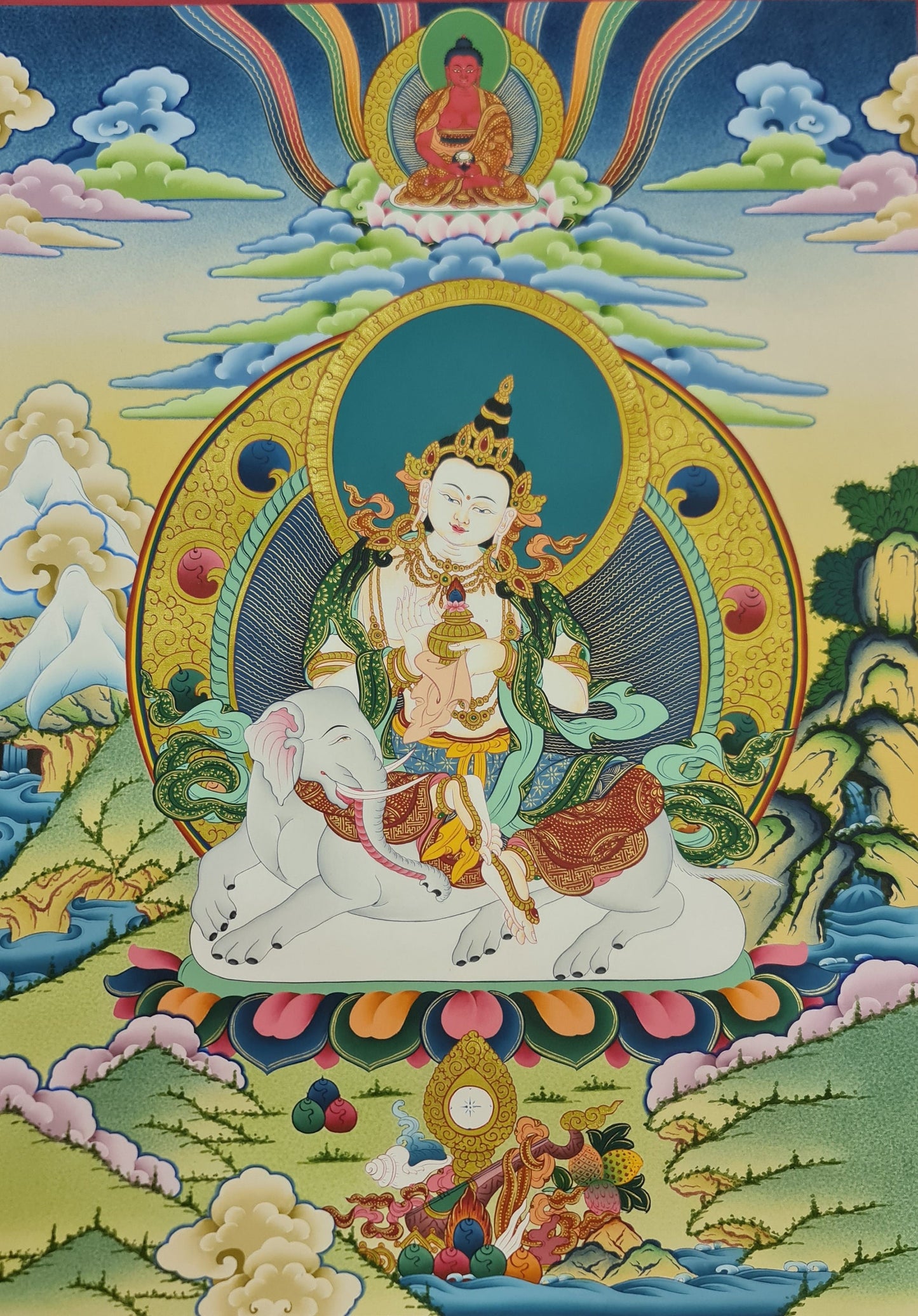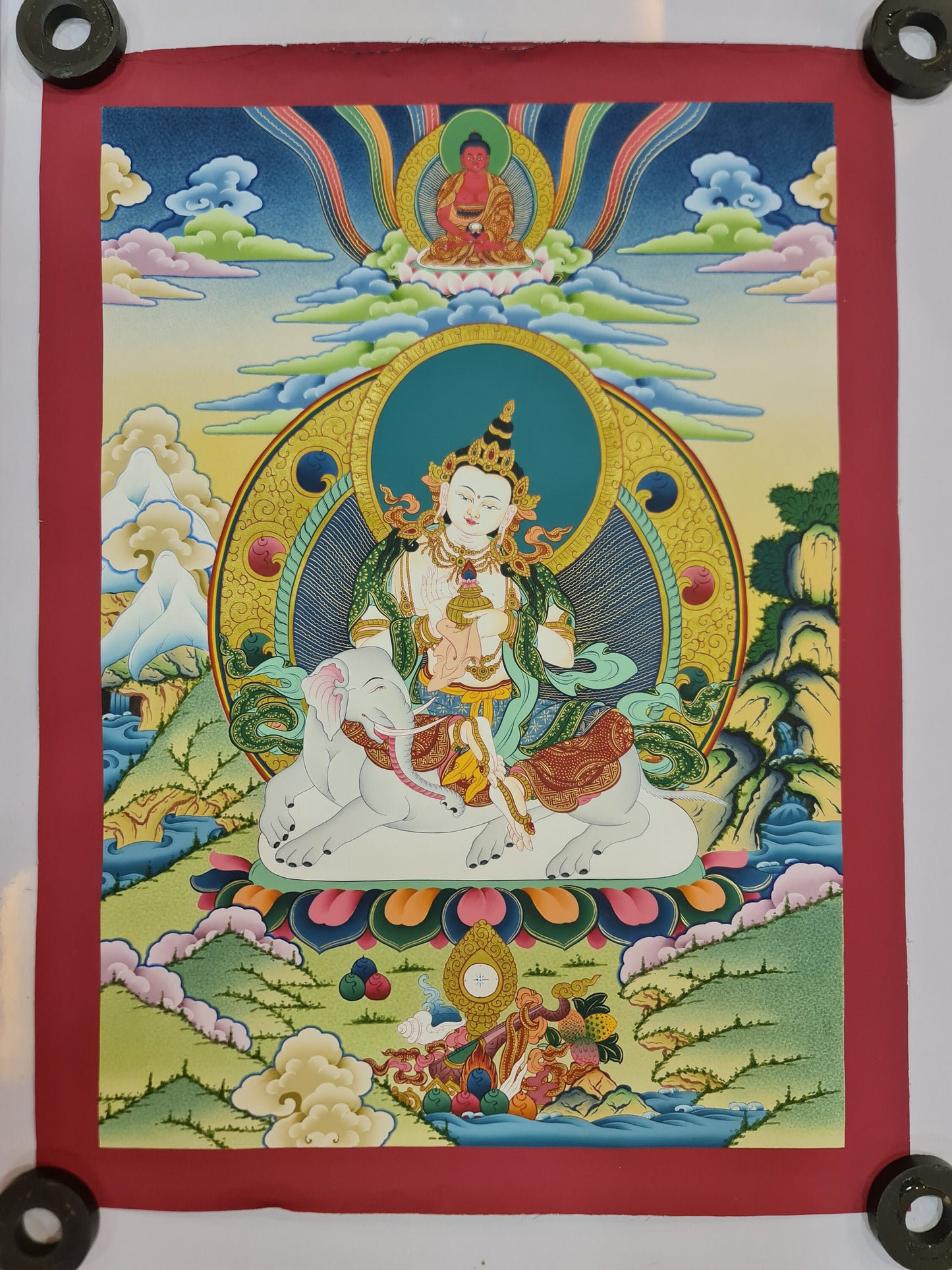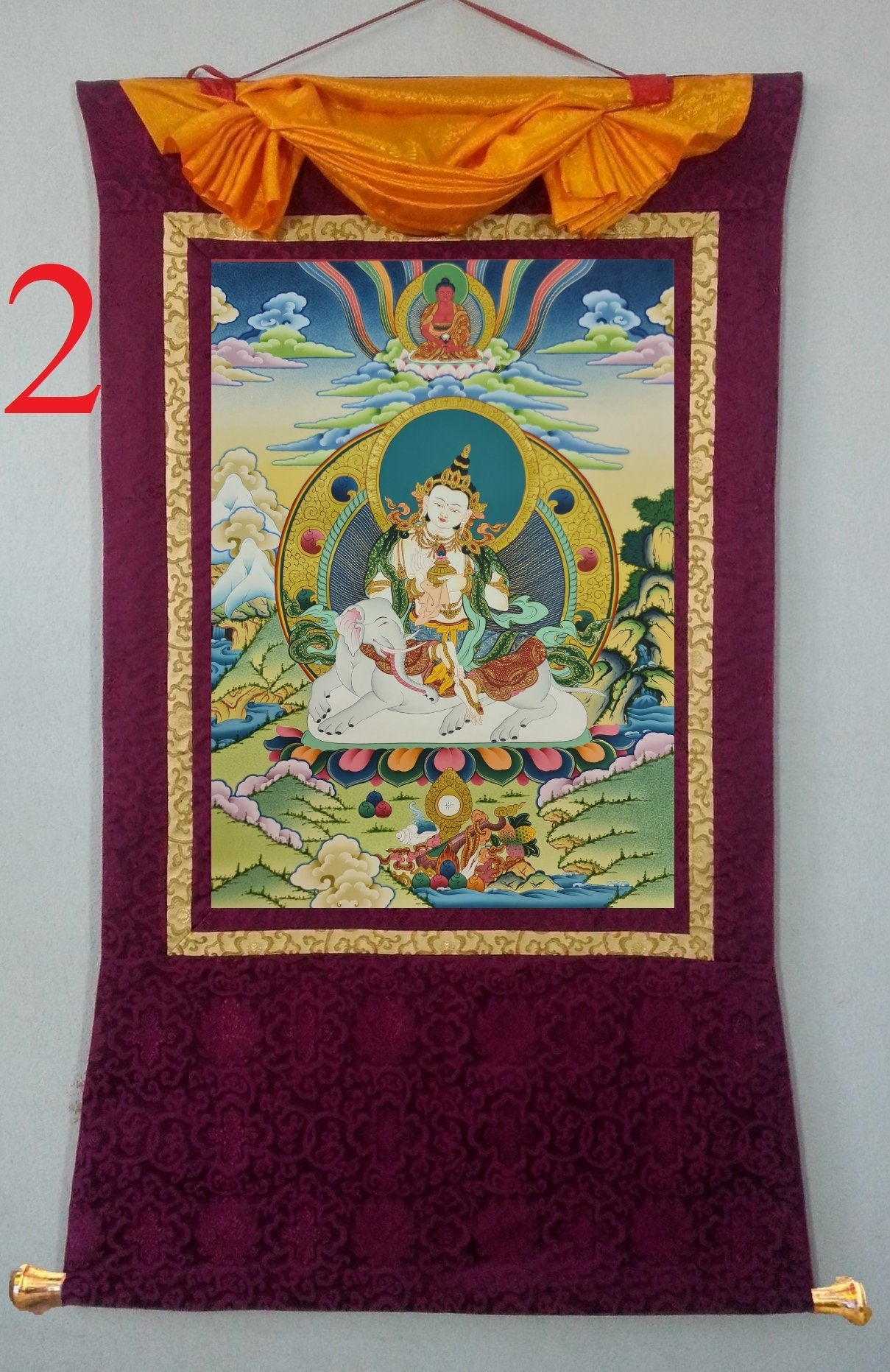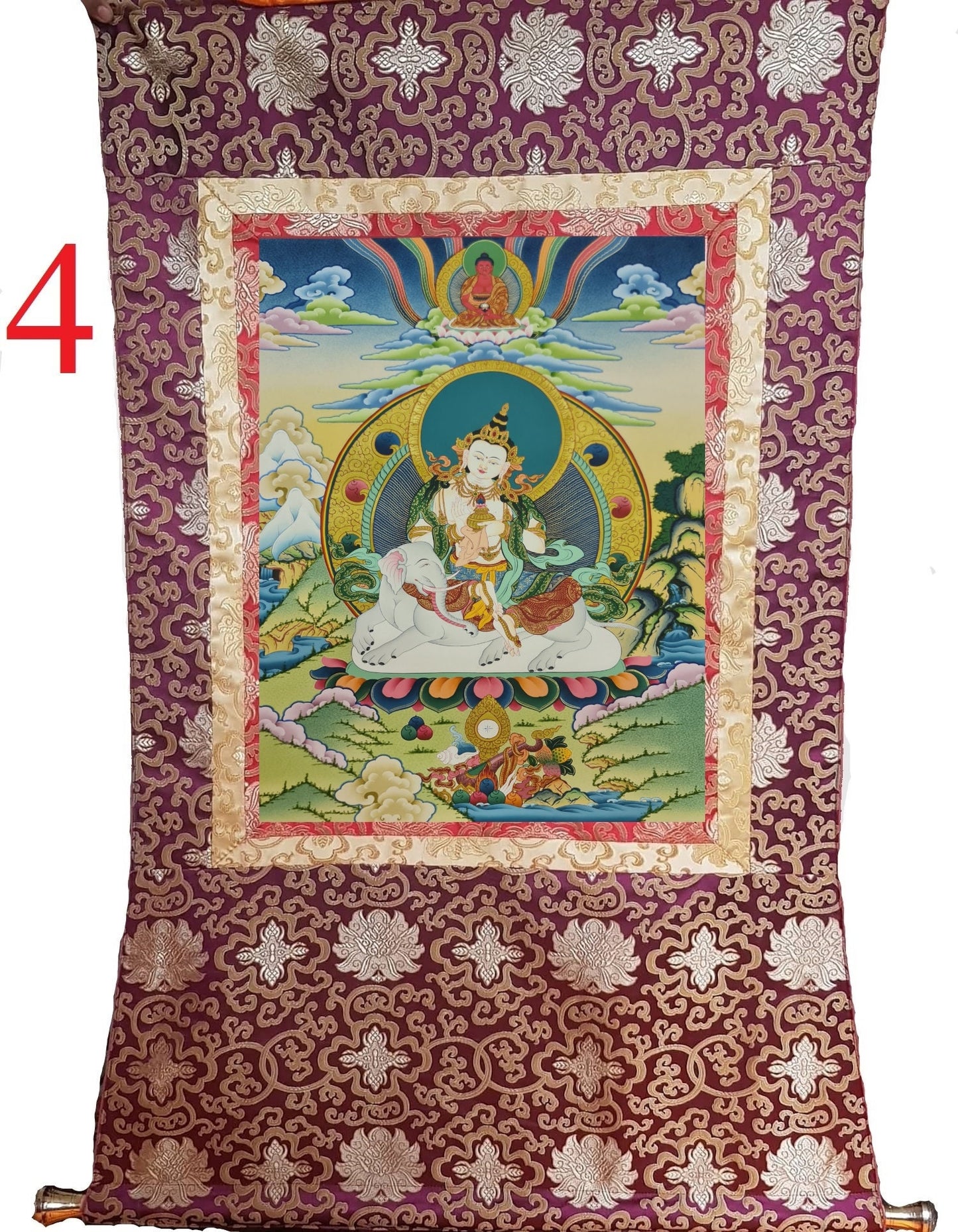1
/
of
6
My Store
299. Taishakuten Shakra Devanam Indra Thangka (Thanka). Free Brocade / Free Shipping.
299. Taishakuten Shakra Devanam Indra Thangka (Thanka). Free Brocade / Free Shipping.
Regular price
$365.00 USD
Regular price
Sale price
$365.00 USD
Quantity
Couldn't load pickup availability
Taishakuten Shakra Devanam Indra
Taishakuten is known in Sanskrit as Indra, Śakra, Sakradevanam Indra (Śakra-devānām Indra), or Shakra Devanam Indra. Positioned in Center. Buddhists in Tibet, China, and Japan have adopted Taishakuten as their guardian deity. In India, Indra was the ruler of the gods of the Veda. Not only was he the mightiest of gods, but also the god of storms, thunder, and war.
Once incorporated into Buddhism, Taishakuten becomes one of its greatest protectors. Said to live in the Palace of Correct Views (Jp. = Zenkenjō) located in the Trayastriṃśas (Skt.) Heaven on the peak of Mt. Shumisen (Mt. Sumeru or Mt. Meru, the mythical home of the Historical Buddha, the center of the Buddhist universe). There he governs the other 32 gods of that heaven, and is served in particular by the Shitenno (Four Heavenly Kings). He is also known as a god of wealth in Japan.
Taishakuten defends both deities and humans against all that is evil. Able to revive those slain in battle, Taishakuten has attributes of both a creator and a sun god. In the Rig Veda are found more hymns to Indra's dedication than any other. In his home, he let no suffering or sorrow pass. At his court the Gandharva (Kendabba) entertained. Taishaku is, in some ways, similar to Zeus in Greek mythology.
In Japanese artwork, Taishakuten is often depicted riding an elephant. This reflects his Hindu origin, for in India an elephant serves as the mount of Indra. In India, Indra often rides an elephant with 33 heads and 33 tusks named Erawan (Airavata). In Buddhist traditions, this symbolizes the 33 gods of the Trayastrimsha Heaven. Erawan, however, is often depicted as a three-headed elephant in artwork. The elephant is also closely associated with Shaka Nyorai (the Historical Buddha). According to Buddhist mythology, when Shaka was 72 years old, his cousin and brother-in-law, the malevolent Devadatta, hoped to displace the Buddha and take over leadership of the Sangha (Buddhist community). Devadatta released an elephant maddened with alcohol upon the Buddha, but the elephant was struck by Shaka's spiritual power and fell prostrate before him. Some art historians claim this is the origin of the Semui-in Mudra (the “Fear Not” hand gesture) found commonly throughout Asia on statues of the Buddha. In other lore, Queen Maya, the mother of the Historical Buddha, dreamt of an elephant before giving birth to the Buddha. In his prior lives, it is said, the Buddha was once an elephant. Elephant symbolism is also found in Japanese artwork of Fugen Bosatsu, who is commonly depicted riding an elephant as described in the Lotus Sutra.
Size:
Size without Brocade: 15 inches by 20 inches
Shipping:
We ship within 2 business day.
DHL Shipping: 5 to 8 business days with tracking number.
Insurance against loss.
We do wholesale too.
Our one and only priority in this business is to provide "Hassle free Customer Satisfaction". We have "Quality Products" with "Cheapest Price" in the market.
Please contact us to resolve any issues. Contact us via email before leaving any negative or neutral comments. We promise you that we will resolve any issues.
Please confirm the return address with us before returning the product.
Share











